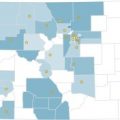
This is a guest post by Holly Kingsbury, a graduate student working with CCMU as part of her coursework at the University of Colorado School of Public Health.
As a public health graduate student, I work in groups often. Nearly every course has a group assignment, where students with different experiences, workloads, and interests must come together to complete a semester-long project. Last semester, I worked in a team to conduct a needs assessment for a Colorado community. Everyone brought various strengths and goals to the group – one classmate was really interested in the literature review, another in getting the perspective of health care providers, and another in how to prioritize solutions to the problem at hand. We knew we had the right skills, but it took time to figure out how all these goals fit into a cohesive workplan. Once we did, we moved forward and completed the project successfully.
If you work for a nonprofit organization, government agency, health service provider, or other community agency, you have probably been encouraged to work in groups, too. Of course, the hard work of interagency or cross-sector collaboration is much more complex than a group project, but there are best practices applicable to both.
Since 2012, CCMU has convened the Colorado Network of Health Alliances, of which one of its goals is to identify and scale up best practices in collaboration across Colorado. Colorado’s health alliances are a driving force of collaborative health change in their communities. The work of these alliances falls along a spectrum of collaborative efforts, ranging from cooperation to full collaboration, and each point along the spectrum has different advantages and challenges. To learn more about the work being done along the continuum of collaboration, Network members expressed a desire to learn from each other about what works well in alliances, what challenges alliances face, and how alliances at different stages of development go about the day-to-day work of collaboration.
Today, CCMU is excited to respond to that request from Network members and publish The Rise of Collaboration: A Case Study Analysis of Colorado’s Health Alliances (PDF). This report provides examples of alliances at three different stages along the collaboration spectrum, and highlights keys to success and lessons learned for alliances in that stage.
When reflecting on my experience in my coursework, some of the lessons learned from the alliances’ work hit home, albeit on a smaller scale, as factors that also helped my group achieve more than each of us could have on our own:
- Fill the table thoughtfully: it takes time, but is extremely valuable, to get the right people at the table in terms of engaging organizational decision makers and community leaders
- Maintain momentum: Keeping everything organized and moving forward is challenging, and requires a champion to manage logistics and keep members connected
- Be patient: health systems change can take a long time, so its important to involve partners to stay involved in and committed to the work
Strengthening the collaboration within alliances and across alliances also provides exciting opportunities for future work of the Network members, including working toward shared funding, evaluation, and health systems change efforts. CCMU has made a commitment to sharing and scaling up best practices around collaboration for health systems change in communities across our state, and I have enjoyed being part of that work. I can’t wait to see how these lessons in collaboration are implemented both within the Network and beyond, and to also apply these strategies in my own life. I hope you’ll read the new report (PDF) to learn more.




